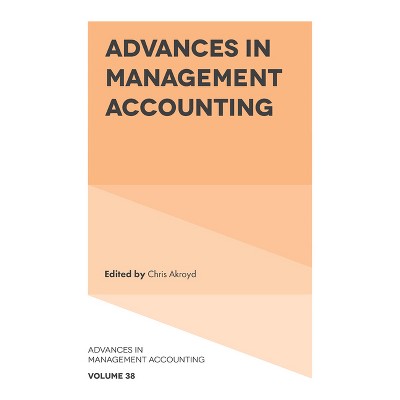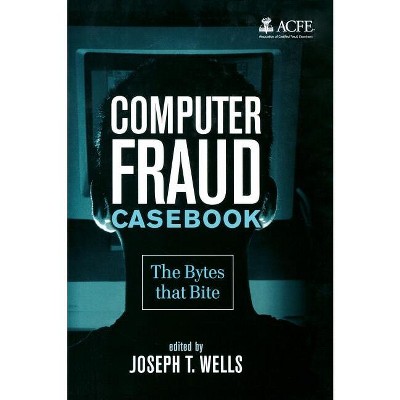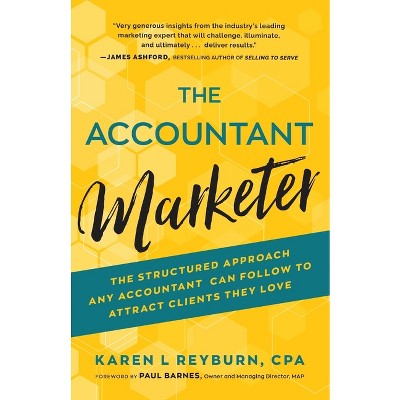Sponsored

Accountant's Guide to Fraud Detection and Control - 2nd Edition by Howard R Davia & Patrick C Coggins & John C Wideman & Joseph T Kastantin
$126.99Save $18.01 (12% off)
In Stock
Eligible for registries and wish lists
Sponsored
About this item
Highlights
- From internal control structures that are not fraud-specific toinsufficient communication in the fraud discovery-to-investigationand conviction process, fraudulent activity is a widespread fact oflife in the business world.
- About the Author: Howard R. Davia, CPA, has over 30 years of experience ingovernment, industry, and public accounting.
- 384 Pages
- Business + Money Management, Auditing
Description
Book Synopsis
From internal control structures that are not fraud-specific toinsufficient communication in the fraud discovery-to-investigationand conviction process, fraudulent activity is a widespread fact oflife in the business world. Historically, the corporate tendencyhas been to react to fraud after the fact, rather than to beproactive in its prevention. And in most cases, blame is directedat accountants and auditors. Unfortunately, these officers arerarely provided with the resources, proper training, and commitmentfrom top management that are essential to effective fraud detectionand control. The Accountant s Guide to Fraud Detection and Controloffers comprehensive direction for this largely unchartedarea.Two types of fraud are addressed in this book: fraudulent financialreporting, also known as "Treadway" fraud, usually originating inthe top management sector; and "asset-theft" fraud, the more commonand more costly type, likely to be practiced by virtually anyone, including outsiders. Treadway fraud is being adequately detected byindependent auditors (CPAs) in their annual audits. Asset-theftfraud is not being adequately detected by anyone, with very fewexceptions. From following clues to achieving a prosecution, hereis sound advice that accountants and auditors will findinvaluable. Businesses lose over $100 billion a year to fraud. Only 20 percentis discovered. Who s to blame? Accountants and internal auditors are often the scapegoats formanagement s insufficient fraud detection operations andguidelines. At last, here is comprehensive, intermediate trainingfor evaluating, devising, and installing fraud-specific internalcontrols, and for conducting proactive fraud-specific examinations.Including actual case studies, the authors show accountants andauditors how to:
* Anticipate problems and follow clues
* Successfully disclose fraud
* Compile the evidence necessary to prosecute acts of fraud
* Develop investigative techniques
* Create effective internal controls . . . and much more, to fillthe needs of this crucial area. www.wiley.com/account ing
From the Back Cover
From internal control structures that are not fraud-specific to insufficient communication in the fraud discovery-to-investigation and conviction process, fraudulent activity is a widespread fact of life in the business world. Historically, the corporate tendency has been to react to fraud after the fact, rather than to be proactive in its prevention. And in most cases, blame is directed at accountants and auditors. Unfortunately, these officers are rarely provided with the resources, proper training, and commitment from top management that are essential to effective fraud detection and control. The Accountant's Guide to Fraud Detection and Control offers comprehensive direction for this largely uncharted area.Two types of fraud are addressed in this book: fraudulent financial reporting, also known as "Treadway" fraud, usually originating in the top management sector; and "asset-theft" fraud, the more common and more costly type, likely to be practiced by virtually anyone, including outsiders. Treadway fraud is being adequately detected by independent auditors (CPAs) in their annual audits. Asset-theft fraud is not being adequately detected by anyone, with very few exceptions. From following clues to achieving a prosecution, here is sound advice that accountants and auditors will find invaluable.
Businesses lose over $100 billion a year to fraud. Only 20 percent is discovered. Who's to blame?
Accountants and internal auditors are often the scapegoats for management's insufficient fraud detection operations and guidelines. At last, here is comprehensive, intermediate training for evaluating, devising, and installing fraud-specific internal controls, and for conducting proactive fraud-specific examinations. Including actual case studies, the authors show accountants and auditors how to:
- Anticipate problems and follow clues
- Successfully disclose fraud
- Compile the evidence necessary to prosecute acts of fraud
- Develop investigative techniques
- Create effective internal controls . . . and much more, to fill the needs of this crucial area.
www.wiley.com/account ing
Review Quotes
"...I opened this book with anticipation and it did not disappoint! I found the book well presented and easy to read. It certainly provides plenty of food for thought."(Accounting Technician, August 2000)
About the Author
Howard R. Davia, CPA, has over 30 years of experience ingovernment, industry, and public accounting. He was president andcofounder of Executive Education Series, Inc., and has taught andlectured widely on the subject of fraud detection andcontrol. Patrick C. Coggins, PhD, is the Dupont Endowed Chair Professor atStetson University and holds JD and PhD degrees in Administrationand Adult Development and Education. He has over 28 years ofexperience in governmental and public sector financial management, legal issues, organizational diagnosis, and income taxes. He haspublished books, articles, and papers nationally and has extensivelecturing and consulting experience. John C. Wideman, PhD, has over 28 years of experience in the civil, criminal, and military intelligence fields as an investigator atthe federal and state levels, and as a private practitioner. He hastaught investigative courses for the U.S. government and severalstate agencies, and is currently a practicing privateinvestigator. Joseph T. Kastantin, CPA, is a consultant, author, and assistantprofessor of accountancy at the University of Wisconsin--La Crosse.He is also a certified management accountant, and the author ofProfessional Accounting Practice Management and several articles onmanagement, business control, and taxation.Dimensions (Overall): 9.35 Inches (H) x 6.35 Inches (W) x 1.25 Inches (D)
Weight: 1.52 Pounds
Suggested Age: 22 Years and Up
Number of Pages: 384
Genre: Business + Money Management
Sub-Genre: Auditing
Publisher: Wiley
Format: Hardcover
Author: Howard R Davia & Patrick C Coggins & John C Wideman & Joseph T Kastantin
Language: English
Street Date: March 13, 2000
TCIN: 1004330052
UPC: 9780471353782
Item Number (DPCI): 247-05-5848
Origin: Made in the USA or Imported
If the item details aren’t accurate or complete, we want to know about it.
Shipping details
Estimated ship dimensions: 1.25 inches length x 6.35 inches width x 9.35 inches height
Estimated ship weight: 1.52 pounds
We regret that this item cannot be shipped to PO Boxes.
This item cannot be shipped to the following locations: American Samoa (see also separate entry under AS), Guam (see also separate entry under GU), Northern Mariana Islands, Puerto Rico (see also separate entry under PR), United States Minor Outlying Islands, Virgin Islands, U.S., APO/FPO
Return details
This item can be returned to any Target store or Target.com.
This item must be returned within 90 days of the date it was purchased in store, shipped, delivered by a Shipt shopper, or made ready for pickup.
See the return policy for complete information.






